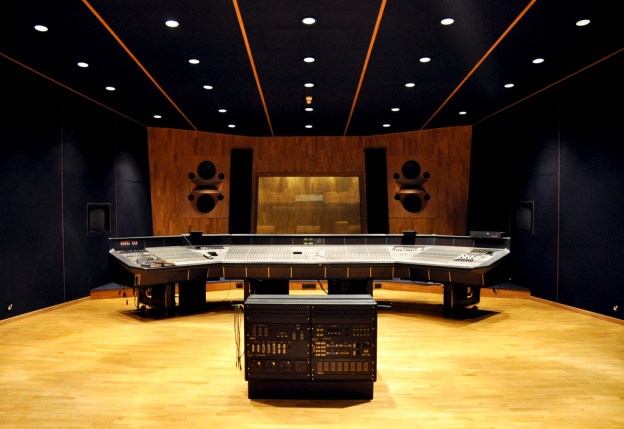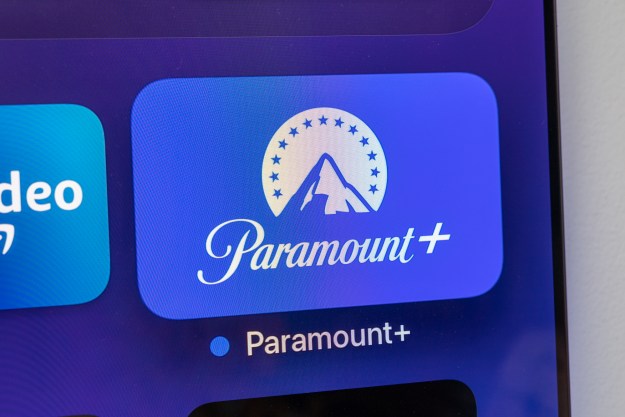 When we dared to broach the idea that MP3s need to be retired, a lot of you respectfully disagreed, arguing that the convenience, affordability, and sound quality of the lossy format makes it the best way to go.
When we dared to broach the idea that MP3s need to be retired, a lot of you respectfully disagreed, arguing that the convenience, affordability, and sound quality of the lossy format makes it the best way to go.
There is no question that digital downloads have become the dominant format for music playback – they now represent 37.2% of all music album sales – and I will confess to being an eMusic subscriber with more than 379 purchases since I first signed up. But I still believe that high-resolution audio is the way to go if you really care about sound quality.
With that in mind, we continue our look at HD audio, this time addressing a topic which might never have come up were it not for the tenacious inquisitiveness of HD audio’s early adopters: provenance.
Due diligence
Provenance is defined as the ‘the place of origin or earliest known history of something.’ And according to Dr. Mark Waldrep, CEO of AIX Records, provenance, with regards to music, “…refers to the technology and techniques used during the original sessions for a particular track or album. Knowing the provenance of a particular music production provides useful information on what a user can expect with regards its fidelity. If a track was recorded back in the 1920s using an analog acoustic recording system, we expect it to exhibit certain sound characteristics associated with that era. I doubt anyone would call a 78 from that period HD. Likewise, knowing that a classic rock album from the 1960s was tracked on a Studer 4-track, mixed to an Ampex 440 2-track deck, mastered to another tape copy and then cut to the ultimate vinyl master prior to pressing commercial copies should mean something too.” In other words, if the sound quality of the music in question couldn’t ever have been called “high definition” in the first place, then a lossless, “high resolution” version of it isn’t going to sound any better. To put it yet another way: A turd in high-definition is, at the end of the day, still a turd.
Dr. Waldrep has been a pioneer in the integration of digital multimedia technologies and the entertainment industry for over 35 years. He was instrumental in the development of the enhanced CD format (The Rolling Stones, Britney Spears, 311), produced and released the very first DVD-Video titles in March of 1997, is the producer/engineer of a large catalog of HD Audio recordings, and developed the first HD 5.1 surround music download site on the web. He has worked with Neil Young, Bad Company, The Rolling Stones, The Allman Brothers and the San Francisco Symphony on multimedia and HD Audio projects.
“Marketing everything that was ever recorded and is now being made available at 96/24 or higher and called HD is false marketing.”
When asked if he thought retailers of high-resolution audio downloads needed to be more forthcoming about what customers are actually getting when they plunk down $17.95 for a 24/96 download, Waldrep responded: “I have no problem with customers having the ability to purchase and download classic albums/tracks from the original master tapes as digital files. The sound of good analog to PCM digital transfers will preserve everything that was experienced in the studio when those mixes were produced. But they should also be informed about what to expect for the premium dollars that they are coughing up.”
Called on the carpet
HDtracks has been criticized for not being more circumspect in regard to the provenance of some of its “HD” downloads. Some customers have complained that certain albums were not checked to make sure they were really high definition before being offered for sale. What were the origins of these “remasters” and did the studios actually provide HDtracks with the real thing, or did they get SACD or DVD-Audio copies?
There is readily available software which will analyze any downloaded music file and provide the bit and sample rate, so it’s difficult to imagine that HDtracks would not have tested everything that they sell. Moreover, HDtracks has addressed this issue in a recent column on Audiostream and we have no reason to believe that David Chesky isn’t being forthcoming with his answers. With that said, could more be done to ensure folks know exactly what they’re getting when they press the buy button?
“By knowing the provenance of a given album, users will have no reason to be disappointed in their purchases,” says Waldrep. “Purveyors of ‘so-called’ HD digital downloads should make clear that the “HD” specifications of the final downloaded container file does not mean that the fidelity of the track is high definition. Marketing everything that was ever recorded and is now being made available at 96/24 or higher and called HD is false marketing. I’ve heard from more than a few customers from other HD download sites asking why the tracks “suck” when they are supposed to be HD. If the original tracks sucked then the downloads will too…HD specs or not.”
Waldrep isn’t trying to be the bad guy here – he earns his living making 24/96 HD recordings – rater an advocate for consumers who may not understand what they are buying. If anything, Waldrep and Chesky, both highly respected recording engineers, have been the format’s best advocates because they actually deal with the recording process on a day-to-day basis. HDtracks offers Binaural+ HD recordings made by Chesky Records that create the illusion that you are actually in the room with the musicians when they played. Engineers place a mannequin in the room with microphones in each ear to achieve that effect – something that you could only hear properly through headphones until recently.
We continued our conversation with Waldrep:
Digital Trends: But if not everything being offered for sale as a high resolution audio download is legitimate, what is the standard that consumers should expect?
Music has become a commodity for most listeners. It has become the soundtrack or background to whatever activity one decides is their primary activity.
DT: Why are MP3s sonically inferior compared to standard redbook (CD) or HD recordings?
MW: As a small record label, I do not release CDs. AIX Records releases our tracks (whether on discs or via downloads) at the HD standard discussed above. MP3s lack the ability to deliver the frequency and dynamic range that is required for accurate music reproduction…if that’s what you want. I do, and I believe my customers do as well. There is a sense of transparency and clarity that comes with an uncompressed PCM file. It doesn’t matter whether it’s a CD or an HD track. A compressed file uses clever techniques to remove frequency components that most will not miss.
DT: Did the arrival of the MP3 set us back in regard to the quality of music reproduction?
MW: The history of audio recording from the aluminum cylinders of Thomas Edison to 78 rpm lacquer discs to analog tape and LP vinyl to CD quality PCM and ultimately to high definition digital encoding systems/formats have always delivered the “potential” for better frequency response and dynamic range. The arrival of complex data compression formats like MP3 reversed the march towards better fidelity in favor of portability and convenience. I say “potential” because the realities of the commercial music industry generally demand the delivery of heavily mastered, very loud tracks through the traditional distribution channels.
When asked if he thought that MP3s had changed the way that people appreciate music, Waldrep replied “Music has become a commodity for most listeners. It has become the soundtrack or background to whatever activity one decides is their primary activity. Music plays while exercising, cooking, working, driving and even reading. The actual impact of a great performance, well recorded and presented via a quality reproduction system, is undeniable. But most people, regardless of age, never get the chance to experience that level of fidelity. When they do…things change.”
Tim Pryde, Senior Director of Audio Product Management at Jawbone, agreed that there is a lot of confusion in regard to what is high resolution audio and why it has struggled to be accepted.
“Most consumers do not understand all of the technical jargon behind true HD tracks and the grey area that is “higher than MP3 quality.” What is great about genuine high resolution audio tracks is that they were both recorded in HD audio and have the ability to be played back at the highest possible resolution with available hardware.”
“Once the term ‘HD’, or ‘High Definition’ became a common phrase related to video, it wasn’t long before people started using it for all types of media including audio,” Pryde added.
 recording studio, but unfortunately the equipment was extremely confusing and expensive, and when compared to the ease of downloads, the mass market was never going to adopt to this technology.”
recording studio, but unfortunately the equipment was extremely confusing and expensive, and when compared to the ease of downloads, the mass market was never going to adopt to this technology.”That was some list…
So with some clarification in regard to provenance and how labels such as AIX Records are trying to move HD audio recording and playback forward into the future, where else can one look for high resolution audio downloads? HDtracks, in our opinion, is still the best source for remastered high resolution downloads as long as you understand what you are getting for your money, but they are clearly not alone. Another great resource for high resolution recordings is Find HD Music, which has information and links to anything 24/96 or higher. If you’re already looking to expand your high resolution audio library, we’ve included some links below to a number of labels and online stores. One thing you need to be aware of is that not everything can be downloaded from certain jurisdictions due to licensing agreements.


